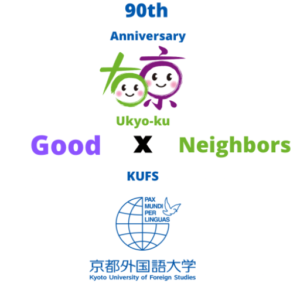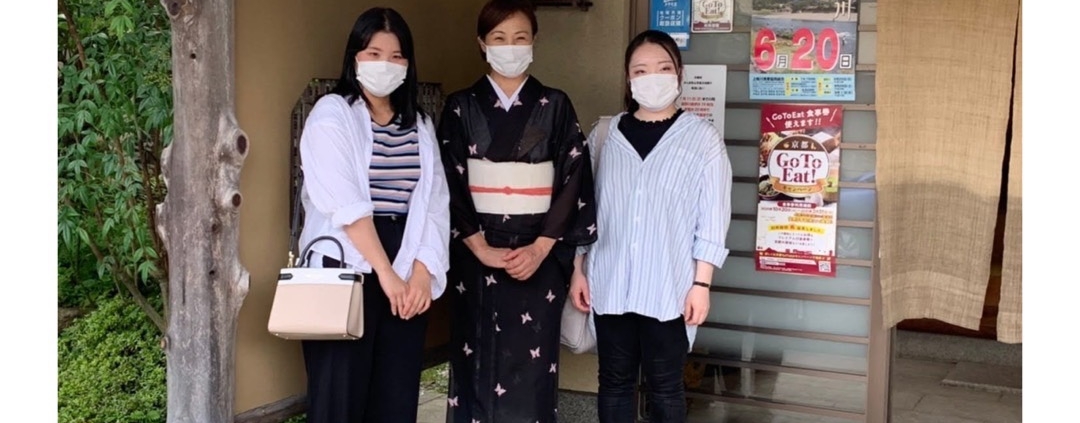[Living Histories] Ms. Shuko Kurokawa
Interviewers/Authors: Miyuki Era, Iori Yamaguchi
Ms. Shuko Kurokawa is the okami (female manager) of Sushiyone, a ryokan (traditional Japanese inn) in Keihokushuzan-cho1, Ukyo-ku, that was founded in 1913, boasting a long history of over 100 years. She has always worked very hard, while raising her four children, but still finds time to write about the seasonal delights of the area in the Okami Saijiki section of the Sushiyone website. She is also involved in local activities such as the Tamba Dance Group and the Keihoku Map Creation project.
― Have you always been involved in the ryokan and tourism industries? If not, what did you do before becoming an okami?
Ms. Kurokawa: No, not at all. I grew up in a typical family home and used to work as an office worker. I basically did administrative and secretarial work in various departments in a completely different kind of workplace.
― Did you experience any difficulties when you changed from being an office worker to an okami?
Ms. Kurokawa: Oh, yes. There were a lot, as I really had to start from the beginning. There were so many things I didn’t understand, so when I think about it now, I feel like I did really well. Just after starting work as an okami, I worked in the background and my first child was born. So, it was hard to balance the long hours with child-rearing. My home and work were all under the same roof, and there were a lot of people in the family at that time. My husband’s parents, an uncle, an aunt, their child, a live-in waitress, grandma—it was really a big family. I grew up in a much smaller family situation, so the differences were huge. But I really did my best to cope with what was in front of me.
― Can you tell us a little about your usual daily schedule?
Ms. Kurokawa: This is a very customer-oriented business, so it really depends on the number and type of customers we have at any one time. Each day can be different depending on whether or not we have overnight guests, a party booking for the restaurant, etc. For example, I woke up around 4 a.m. today, as we have guests staying at the moment. This means we have to prepare the bath for them before they wake up and have breakfast ready for when they are finished and dressed. In this ryokan, it is up to guests what they do from the time they wake up to the time they check out, so we have to wait to clean their room and do the laundry until after they have checked out. And we usually have new guests arriving in the afternoon, so we must prepare everything ready to serve them. It’s a totally customer-centered day. Doing the laundry and preparing meals for the family has to be fitted in between jobs.

― What is the most attractive part of Ukyo Ward for you?
Ms. Kurokawa: I think it’s Keihoku more than Ukyo Ward for me, because it used to be Keihoku-cho, Kitakuwada-gun, Kyoto until about 15 years ago. This area has a natural environment unique to this part of the countryside, and it is a good place for raising children. If you have a car, you can be in the city in about an hour, and I like it because it’s relaxing.
― When we saw Okami Saijiki on your website, we thought how wonderful it must be to be able to experience the changing of the seasons up close. What season do you like the most?
Ms. Kurokawa: I hate the cold winters. And because the winter is so long and cold here, I would have to say that spring is my favorite. A lot of cherry blossoms bloom in spring here in Keihoku, so I would like everyone to come and see for themselves. No matter where you look, the town is filled with beautiful cherry blossoms.
― Are the seasons expressed through the cuisine in this ryokan?
Ms. Kurokawa: In spring, there are lots of delicious foods to be enjoyed, such as the colorful edible wild plants that grow locally. We also welcome visitors from all over the country to enjoy our famous local Ayu Kaiseki (traditional cuisine featuring sweet fish) that has been handed down from generation to generation. Keihoku’s sweet fish is particularly delicious, so I definitely recommend people to come to Sushiyone in the summer to try it.
― What do you think makes Ukyo-ku and Keihoku special?
Ms. Kurokawa: The people of Keihoku are wonderful, and the nature is simply beautiful. Also, because the population is quite small, the neighborhood relationships here, from grandparents to grandchildren, are just like that in the old days. People feel connected and look out for each other. I’m not sure whether this would be bothersome for some people, or welcoming for others, but for me personally, it is a special part of life in Keihoku.
― You’re wearing a beautiful kimono. Can you tell us about it?
Ms. Kurokawa: Kimonos can be quite heavy and take up a fair bit of space. Therefore, those who are no longer interested in them, often throw them away. Not me though, I will take them and wear them with great care and respect. Actually, nine years ago, I started a kimono class for local people who don’t usually have the chance to wear them even though they have one, or who find it difficult to put one on by themselves. So, this is an opportunity for them to enjoy wearing kimono together with others, using kimono that have hardly been worn. Kimono is actually a form of handicrafts, so I’m passionate about passing this down to the next generation. As a matter of fact, we have recently decided to sell Ponzu (citrus-based soy sauce) in bottles wrapped in kimono material as souvenirs. In this way, we are trying to do various things to make use of kimonos that would otherwise be abandoned.
Note
1. Keihokushuzan-cho, Ukyo Ward: A town that boasts superb views surrounded by nature, about an hour’s drive from Kyoto City. In 2005, Keihoku-cho, Kitakuwada-gun, Kyoto Prefecture was integrated into Ukyo Ward, and became the current Keihokushuzan-cho.



